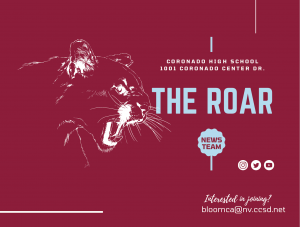By Lexi Lane

Between the “King of Rock and Roll,” Elvis, who reigned through the 50s, to the early 2000s diva pop era where names like Britney Spears and Christina Aguilera took the spotlight, teenagers’ tastes in music can reflect what eras they find interesting.
During the first half of the 20th century, including the Roarin’ Twenties, the songs regarded as patriotic today were widely popular. This includes “America the Beautiful,” and “Yankee Doodle.” The most popular song from the 1910s was Original Dixieland Jazz Band’s “Tiger Rag.” Released in 1918, this song spent eleven weeks on the U.S. billboard chart and was critically acclaimed, but most people have never heard of this song, nor would they listen to it today. When listening to songs from the earlier decades, it shows just how far music has come.
Advancing into the sock hop era of the 1950s, music was released that made Elvis Presley, Frank Sinatra, and Doris Day household names. These were jazz influenced crooners with hints of rock and roll and launched the start of the rock influence today.
Ten years later, a swinging era began with new music trends on the rise. Dance crazes were made popular with Chubby Checker’s “The Twist,” which hit number one in two separate years. Beatlemania and the rise of boy band hype began with The Beatles in this time span as well, paving the way for later bands for girls to fall in love with down the line, including 1990s N*Sync, Backstreet Boys, and One Direction in the 2010s. Motown also rose to the scene in this time with singer Diana Ross and group Jackson Five gaining traction.
Rock and roll ruled further into the late 60s and 70s, with groups such as Led Zeppelin, Pink Floyd, Jimi Hendrix, and The Who, as well as David Bowie.
Next comes the generation of parents’ music, the 1980s. It was a time of glam rock and bands, with the biggest hit of the decade being Blondie’s “Call Me.” Queen was also becoming a household name, as well as the now solo member of the Jackson Five, Michael Jackson.
The 1990s had such a wide span of sounds that there was music for everyone to love. Grunge/alternative rock became popularized by bands like Nirvana, Pearl Jam, Oasis, and Red Hot Chili Peppers. Green Day also became popular during this time.
R&B, hip-hop, and rap also played a part between TLC, Mariah Carey, Destiny’s Child, and MC Hammer. Names like Tupac and Biggie Smalls cemented themselves as rap legends and fueled the feud between East and West coast rappers.
The 90s contained a new era of singer-songwriters, made popular by Alanis Morissette’s “Jagged Little Pill.” This decade also saw the rise of girl/boy bands like the Spice Girls and Backstreet Boys. Britney Spears and Christina Aguilera also rose at this time, becoming the pop princesses of the new century.
This trend followed into the early 00s where the music was everywhere across the board. Pop music was at a forefront on the airwaves, and in the later years, solo artists Beyonce and Lady Gaga became widely known. Electronic/dubstep music also got its start towards the decade’s end. Rap continued, along with country to rise, as well as a throwback to older age soulful jazz with Amy Winehouse’s “Back to Black,” released. Alternative rock grew more in this era with bands emerging including local group The Killers, releasing their debut album in 2004, as well as The White Stripes. Green Day continued their reign into the following years and had a revival music wise with “American Idiot.”
Music may have started with few genres, but as society has become more diverse, music has as well. As time went on, songwriters interpreted music, adding new twists and turns. Thanks to the creativity of these artists and groups, the music of every vibe is available to enjoy.











